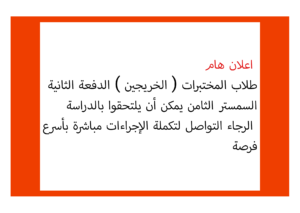Zamzam Medical Journal (ZMJ)
ZMJ is a peer reviewed medical journal that represents a positive contribution to other journals in the field. It is published at the current time every three months. It publishes articles in English language.
Vision
Zamzam Medical Journal contributes to growth and aaplication of research through providing:
- High quality peer reviewed papers to academics, researcher.
- Highly effective and reliable information
- Opportunities for discussion and exchange of ideas, thoughts and innovative methods.
Mission
The mission of the Journal is to provide platform for the researchers in all medical and scientific fields all over the world through the following:
- Availability of knowledge to researchers who seek it
- Distribution of thoughts and ideas that help scientist in their daily work, lifelong learning and career development
- Communicate research outcome
Instructions to Contributors
The journal accepts the following papers types:
- Original articles: On submission the articles authors (corresponding author) should provide name, email address and institutional affiliation for all contributing authors,
A scientific study of a certain question should comply with the following:
- Abstract (Objectives, Materials and Methods, Results and Conclusion). It should not duplicate the introduction.
- Introduction: Must create a good impression. Statement of the problem or study question, rationale and hypothesis should be stated clearly.
iii. Materials and Methods should include official ethical clearance and valid consent should be clearly stated when the work includes data collection from humans
- Results: Should confirm or reject the hypothesis
- Discussion: What do the findings mean in accordance or in disagreement with others findings
- Conclusion: It should remind the reader what is gained from the study and why the article was written
Original articles should be no more than 3000 words.
Pages should be numbered consecutively in Arabic numerals starting from the title page.
All persons designated as authors should qualify for authorship, and all those who qualify should be listed.
Each author should have participated sufficiently in the work to take public responsibility for appropriate portions of the content.
Other people, institutions or bodies that provide some help which does not reach the level of authorship can appear in the acknowledgement part.
.
- Review articles: These articles provide comprehensive summary on certain topic or research. They include title, abstract , introduction, conclusion and references.
- Case reports: new and highlight areas of interest in particular diagnosis, unique therapeutic approach, an unusual presentation of a disease or cases provide new ideas that should contribute significantly to existing knowledge on the medical and scientific field. The components of case report should include abstract, introduction, description of the case, the discussion, conclusion, conflict of interest and References are written in Harvard style (in test citation), if quotation from a book included the page number should be included as well.
- Letters to editor: the writing should be very short and has the capacity to convey the message in not more than 400 word. The author should get to the point immediately and support their statements with evidence and should point to new and additional information.
- Commentaries: The aim of a commentary is to provide varying perspectives on a topic. It should include new or in depth knowledge on existing problem. In a commentary the title should be short and the abstract should not be included. Commentaries should be short with few references
Authors’ Credit and Responsibilities
Authors are required to submit their work according to journal guidelines. The corresponding author is responsible for manuscript correction and whole correspondence during submission and resubmission. In addition to that he is completely responsible for the accuracy of all statements contained in manuscripts. A corresponding author should clearly be nominated to be in contact with the editorial board.
Author(s) should:
1) Show their substantial contribution to the work, analysis and interpretation of data. On the other hand they should be qualified and certified to report scientific data or conduct scientific research.
2) Make clear who have drafted the article or revised it critically for important intellectual content.
4) Inform all co-authors getting their approval for publication.
References
References are to be cited according to the Harvard style of referencing (in text citation) in which numbers are not used to identify the references. Instead in text citation are identified by author name and the year and references are ordered alphabetically rather than numerically. When referencing a book, the in text citation should include the number of pages. For books referencing is as follow: Authors, year, title, Edition, Publisher, Place of publication.
Tables should be presented in the manuscript and will not be accepted as an image. Tables should be self-explanatory and can be understood independent of the text and should supplement and duplicate the text.
Each table requires a title on top of it with sufficient spacing between columns and rows. Each table’s column requires a heading description. Foot notes are used to provide additional information for the table and placed after the table.
Figures should be type written double spaced on (17×24 cm) on size A4 paper with margins at least of 2 cm.
Pictures (plain or coloured) may also accompany the manuscript in case they are necessary as clarification means.
The journal standard font is Times New Roman .
Three original and two photocopies of the manuscript should be submitted.




